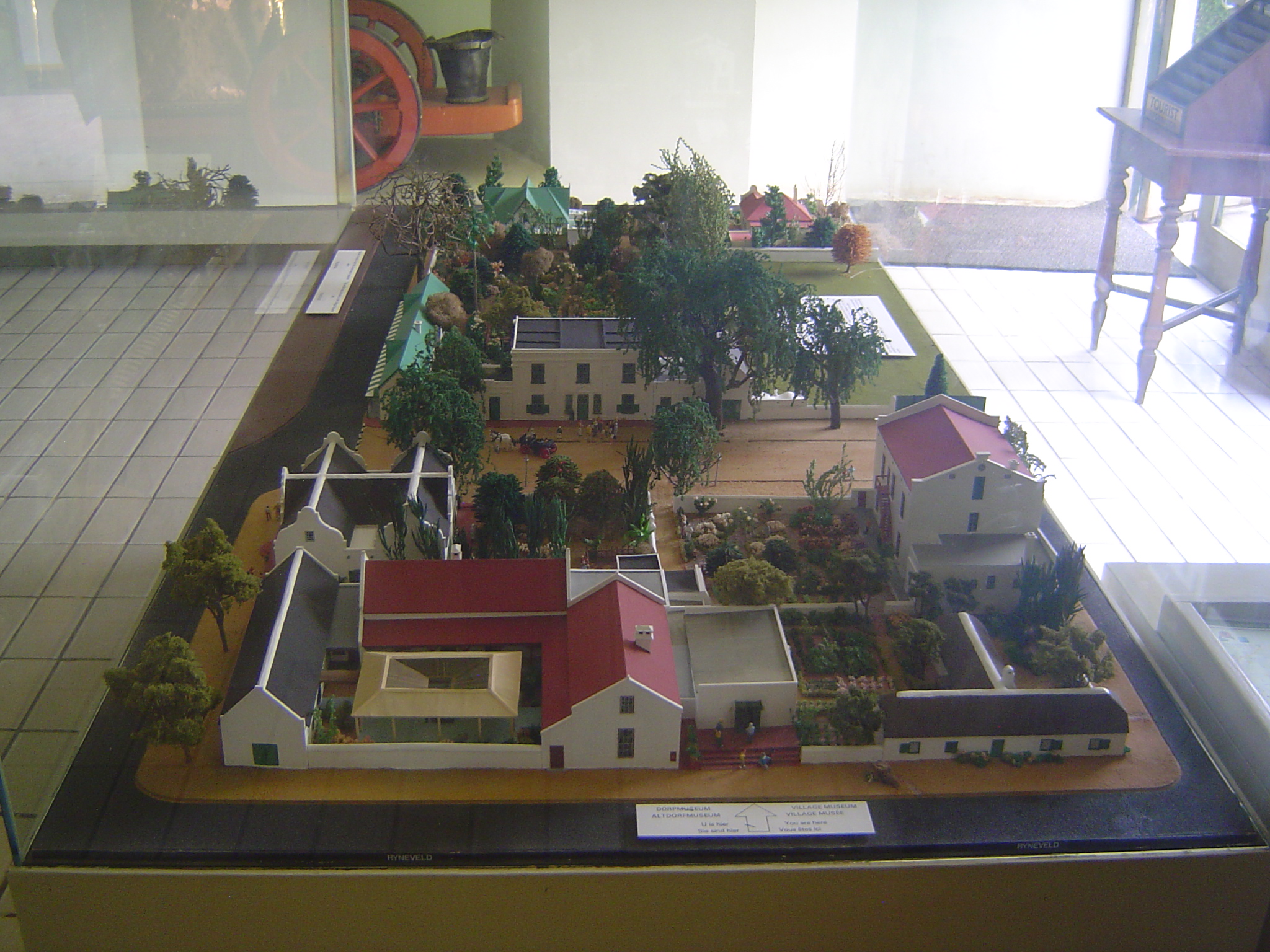
Home UpStellenbosch Village Museum
The excellent Village Museum is an ensemble of four houses, each restored to represent a different period in the history of the town.
The oldest of the four is the one-story house at the lower right, the Schreuderhuis from 1709. Kitty-corner to it is the H-shaped Blettermanhuis from 1789 and the residence of the last magistrate or (landdrost) to be appointed by the VOC, the United East India Company. Across the street is the two-story, flat-roofed Grosvenor House, from 1850. The last of the four is the red-roofed building behind the Schreuderhuis; it's the Bergh House from 1850.
The Schreuderhuis, seen here from the street, was on land given to a VOC soldier. It's one of the oldest homes in the country but in 1970 was about to be demolished. Instead, the museum, which had been established in 1962, managed to acquire and restore it.
Inside, everything is dead simple but, blurred as the image is, elegant.
Context.
Dining room table. The very devil for spilled soup but beautiful anyway.
It's called a flash. ("Oh! I get it now.")
Much higher on the hog, this it the Blettermanhuis, with perfectly hung doors between rooms. There are four panels, and they swing silently with a finger's touch.
Entrance to the Grosvenor house, which Fransen calls "the finest house in Stellenbosch." It started out one story under thatch. and grew to a T-plan, then an H. The second story followed, along with the fluted pilasters and the plaster oak in the pediment. (The town is sometimes called Eikestad, or Oak City, and oak leaves appear on its crest.)
It's time for an ownership whirligig. A house was built here immediately after the land was granted in 1781. The house sold in 1790 and again in 1799 and 1820. That last purchaser died two years later, and his widow married a son of the first owner. He declared bankruptcy, however, and sold the house to his married daughter. In 1872 she sold the house to the first Speaker of the Cape parliament, and three years later he sold it to William Collins, in whose family the house remained for 56 years. The name Grosvenor was first applied to the house by the Collins family. Eventually the house sold to a man named Church, who sold it to the municipality, which in 1961 made it a museum. Home sweet home.
Entrance hall. The lights are off, which is all to the good if we're trying to learn how such rooms actually felt.
Directly above. There are bedrooms on either side.
Rear of the building.
Flanking the house on one side is this unusual addition, which was built as a boarding house by the Widow Collins, the last in her family to own the house.
The fourth house, the Bergh House, is a cluttered Victorian, but it does have a remarkable proto-shower.